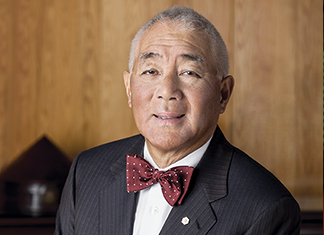How to Become a Data Scientist -- the New Wolf of Wall Street
- Caifu Magazine | by Caifu Global
- EN

In the 20th century, parents encouraged their children to become a doctor, lawyer or banker when they grew up. Now, they may guide them toward another career path as a data scientist.
Labeled by the Harvard Business Review as the “sexiest job in the 21st century” because of the increasing importance of data analysis in corporate decision-making and business strategy, data scientists are commanding high salaries. According to Glassdoor, the starting salary for data scientists in New York, the finance capital of North America, is around U.S. $108,000. The national average is approximately $113,000.
A data scientist on Wall Street in 2016 is expected to be a jack-of-all-trades, experts note. A candidate must be a self-learner with a background in finance, have an aptitude for coding in languages like Python, Java, C and C++, and the ability to decrypt statistics and do predictive analytics with tools such as R and SAS. In short, working with all types of data – from video, social media, code and raw statistics – allows a data scientist to interact with many different functions of a business.
In addition, he or she should possess intellectual curiosity and have solid communication skills. “A data scientist is somebody who is inquisitive, who can stare at data and spot trends,” said Anjul Bhambhri, vice president of big data products at IBM.  “It’s almost like a Renaissance individual who really wants to learn and bring change to an organization.”
“It’s almost like a Renaissance individual who really wants to learn and bring change to an organization.”
Data science is a very buzzworthy field, Adam Flugel, a recruiter with Burtch Works, an executive recruitment firm based in the Chicago metropolitan area, told CAIFU on Friday, March 4. “[They] must have the ability to write code, wrangle messy, unstructured data, and know how to meld it.”
In financial services, most data is structured because it is a regulated industry, added Meghan Shea, a Burtch Works recruiter specializing in credit and risk analytics.
Those already in the field note how cutthroat a data scientist role can be. Dhanurjay “DJ” Patil, the first-ever chief data scientist for the U.S. government, has been quoted as saying: “One of the first things I tell new data scientists when they get into an organization is that they better be the first ones in the building and the last ones out. If that means four hours of sleep, get used to it. It’s going to be that way for the first six months – perhaps a year.”
Empire State of Mind
Wall Street firm JPMorgan Chase has led the brigade in attracting the best and brightest coders and statisticians this decade. In his annual shareholders’ letter in 2014, CEO Jamie Dimon said the firm had “nearly 30,000 programmers, application developers and information technology employees who keep our 7,200 applications, 32 data centers, 58,000 servers, 300,000 desktops and global network operating smoothly for all our clients.”
Since then, investment banks have sought out data scientists who can code the most creative algorithms to make trades, Shea explained. There is a race among them about which investment bank has the best technology, not strategy.
Data science teams assembled at banks are now building data science platforms related to digital behaviour online, Shea pointed out – like how to target customers and how to keep them engaged.
According to LinkedIn, financial services companies looking for data scientists based in New York as of March 2016 include American Express, BlackRock, Chase, Goldman Sachs, JPMorgan Chase, KPMG, PwC and TIAA-CREF.
Hedge funds have different strategies to approach data science, and hide their tactics, Shea said. While not a hedge fund, New York-based qualitative trading firm Jane Street is also shrouded in secrecy, as its traders specialize in strategies to capture profits by buying and selling large amounts of exchange-traded funds using its own capital.
Jane Street also has a reputation for being the toughest job interview on Wall Street, the New York Times reported in February 2015. The firm hires only a handful of new employees every year. Candidates are tested with difficult math riddles and game theory question sets.
Sandor Lehoczky, managing director and partner at Jane Street, told the New York Times the ideal ETF trader should possess what he calls second-order knowledge – where smart people can accept wrongdoing, and own up to their mistakes. Therefore, he might give a candidate an unsolvable math problem to gauge their reaction to failure.
The cream of the crop on Wall Street rise above the mental challenges, and form bonds with one another. “They’ve been working 10 times harder than most places, because it is do or die,” Patil said.
If You Can Make It There, You Can Make It Anywhere
Aspiring data scientists are up for the challenge, no matter where they end up. The number of data scientists has doubled since 2011, reported RJMetrics, a Philadelphia-based software start-up, in May 2015. The report, which tapped into LinkedIn data, found that around 11,400 data scientists are employed worldwide as of May 2015 – and that number is growing fast.
Despite the number of openings in the data science field, these jobs are hard to fill because of the knowledge requirements, Flugel said. “The industry is also looking for leaders – someone who understands the space – like data scientists in finance. They don’t exist yet.”
Beyond New York and Wall Street, data scientists can be flexible about their location, Flugel noted, but most head to San Francisco, “the mecca of data science,” Boston, Seattle and Chicago.
Those interested in developing their skills and talents at a start-up may target Atlanta, Dallas and the Los Angeles area, as Irvine is an up-and-coming data science hub, Shea added. Many financial services firms specializing in fraud detection are based in San Diego. Software companies in Southern California have their data scientists focus on solving data breaches, security issues and preventing identity theft.
Looking ahead, Flugel sees a data scientist evolving from one who tackles all aspects of data analysis into a team of equals. “The lines will be blurred between traditional roles,” he concluded. “Unicorn data scientists may be phased out. More data engineers will emerge to set up [a company’s] infrastructure, while another team member will focus solely on statistics. The teams will blend, and mesh knowledge bases.”
Future Data Scientists Head Back to School

Those pursuing a career as a data scientist – the hot job of the 2010s – should look into a graduate degree to hone their business and technical skill sets to analyze big data.
According to recruiters at Burtch Works, a Chicago-based executive recruitment firm, data scientists have either a master’s or a Ph.D. in a quantitative discipline, such as applied mathematics, statistics, computer science, engineering, economics, or operations research.
Financial firms looking for data scientists are focused on the pedigree of the school name, noted Meghan Shea, a recruiter at Burtch Works who specializes in credit and risk analytics. Prestigious institutions like Harvard and Columbia are the breeding ground for data scientists to network with peers and connect with mentors.
The following elite schools have developed masters programs in big data in the past several years:
- Harvard University: The Ivy League institution’s School of Engineering and Applied Sciences offers a one-year Master of Science in computational science and engineering. Harvard’s Institute for Applied Computational Science developed the program in 2010.
- Columbia University: Located only a subway ride away from Wall Street, Columbia’s
Fu Foundation School of Engineering and Applied Science offers a Master of Science in computer science with a concentration in machine learning, which covers techniques and applications in areas like fraud detection, finance and information retrieval. Columbia’s Data Science Institute also prepares future Wall Street tycoons in pursuit of a master’s or a doctorate how to decipher financial and business analytics.
- New York University: With Wall Street in its backyard, NYU’s Stern School of Business offers a two-year Master of Business Administration with a specialization in business analytics. This interdisciplinary degree has courses that cover data mining, decision models, econometrics, forecasting time series data, risk management, trading strategies and systems and regression and multivariate data analysis. MBA students can also get involved with The Center for Business Analytics, a research initiative focused on the use of statistical, machine learning and experimental methodologies with massive datasets.
- University of California, Berkeley: For working professionals hoping to transition into a data scientist role, the school located near San Francisco offers a professional master of information and data science (MIDA) online. Berkeley’sCollege of Engineering is also the home of the AMPLab, which explores the role of algorithms, machines and people in big data analytics.
- University of Ottawa: Canada’s preeminent data science program is located in its nation’s capital, and the university offers two interdisciplinarymaster's program in Electronic Business Technologies. The electronic business track focuses on organizational transformations based on attracting and satisfying new customers and integrated supply chains, while the electronic technologies path focuses on IT and the system architecture itself to create and manage online transactions.















